We are in the age when online e-commerce is booming like never before. If you are a manufacturer then managing warehouse might be difficult for you. I think for every single task you need a staff and hiring them is even more difficult.
To solve it all here comes the Warehouse Management System (WMS). It helps you to manage and control daily warehouse operations easily.
The global warehouse management system market size was valued at USD 3.94 billion in 2023 and is projected to grow at a CAGR of 19.5% from 2025 to 2030.
Verified Market Statistics
Today we will look at the top 10 Warehouse Management System Examples that will help you transform your logistics operations.
Before moving to that let’s understand what Warehouse Management System actually is.
- What is Warehouse Management System?
- Top 10 Examples of Warehouse Management Systems
- 1. SAP ERP Warehouse Management System
- 2. Tecsys Elite Warehouse Management System
- 3. IBM Sterling WMS
- 4. Generix Group Solochain WMS
- 5. Microsoft Dynamics 365 Supply Chain Management System
- 6. Microlistics Warehouse Management System
- 7. Oracle Fusion Cloud WMS
- 8. Körber (HighJump) WMS
- 9. vTradEx eLOG WMS
- 10. Infor CloudSuite Warehouse Management System
- Comparision Table of All 10 Examples of Warehouse Management Systems
- How does a WMS Improve Logistics and Supply Chain Operations?
- Can small businesses benefit from implementing a WMS?
- What are the key factors to consider when choosing a WMS?
- Final Words
What is Warehouse Management System?
A Warehouse Management System (WMS) is a software solution designed to optimize and manage all warehouse operations. The software improves accuracy, efficiency, and productivity in inventory tracking, picking and packing goods, to receiving and shipping products. WMS does it all by automating these processes. It reduces errors, saves time, and lowers costs, enabling better inventory control and faster order fulfillment.
Advanced WMS solutions offer real-time data insights. It enhances decision-making for warehouse managers. By integrating with other systems like Transportation Management Systems (TMS) and Enterprise Resource Planning (ERP) systems, a WMS ensures a seamless flow of information across the supply chain.
The Logistics Management report states that WMS is used in 85% of warehouse operations.
Benefits of Using Warehouse Management Systems (WMS)
As we discussed above WMS has transformed warehouse operations. It saves time, cost and efforts. Although let’s look at few benefits of using WMS:
- Increases efficiency by automating and streamlining warehouse processes.
- Reduces errors in picking, shipping, and eliminates unnecessary work.
- Enhances inventory management with real-time visibility and tracking.
- Improves space utilization and reduces waste and operational costs.
- Helps in better labor management and boosts employee morale.
- Improves customer satisfaction with faster and more accurate deliveries.
- Enhances supplier relationships by reducing wait times at loading docks.
Now it’s time to look at Top 10 Examples of Warehouse Management Systems.
Top 10 Examples of Warehouse Management Systems
1. SAP ERP Warehouse Management System
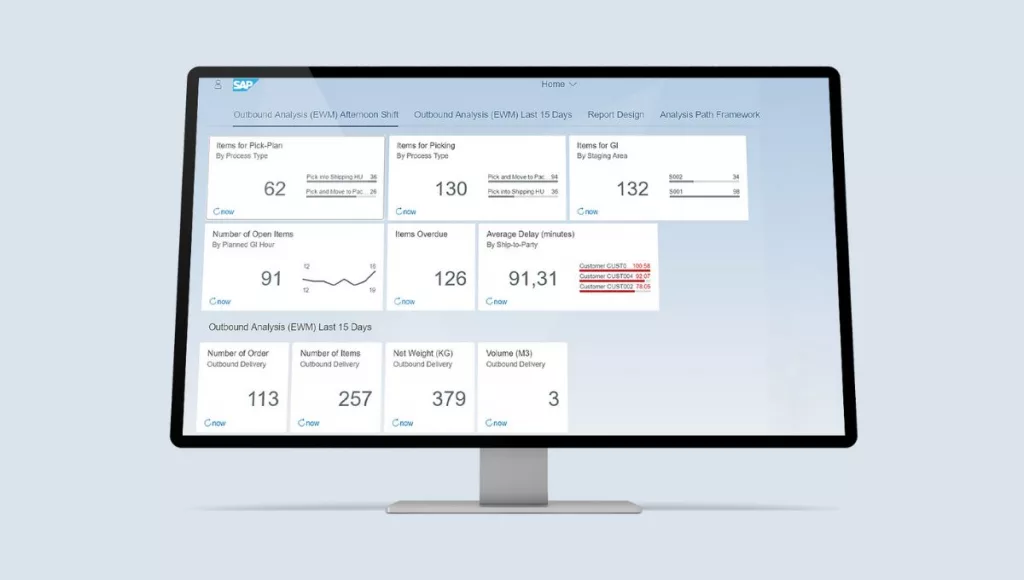
SAP Extended Warehouse Management System optimizes warehouse operations. It handles high volumes efficiently. The system by SAP is modern and flexible for changing business conditions. Operations performed via this WMS are sustainable and risk-resilient. All the processes are digitalized in the cloud. This WMS enhances operational responsiveness.
Benefits of using SAP ERP Warehouse Management:
- Enhances inventory visibility across the warehouse.
- Integrates seamlessly with SAP ERP which helps in efficient operations.
- Optimizes warehouse space utilization that reduces cost.
- Supports complex warehousing processes, including RF scanning and batch management.
- Enhances decision-making through real-time data and analytics.
- Improves customer service with faster and more accurate order fulfillment.
Key Features:
- It helps in comprehensive inventory management.
- Advanced picking and packing functionalities for efficient order processing.
- Real-time warehouse monitoring and reporting capabilities.
- Support for multiple warehouse layouts and storage types.
- Automated goods movement and tracking which increases accuracy.
- Integration with transportation management for seamless logistics.
Limitations:
- High implementation and maintenance costs may be prohibitive for small businesses.
- Complex setup and customization processes require specialized knowledge.
- May be overly complex for simpler warehouse operations.
- Integration challenges with non-SAP systems can occur.
- Requires ongoing training for staff due to its complexity.
2. Tecsys Elite Warehouse Management System
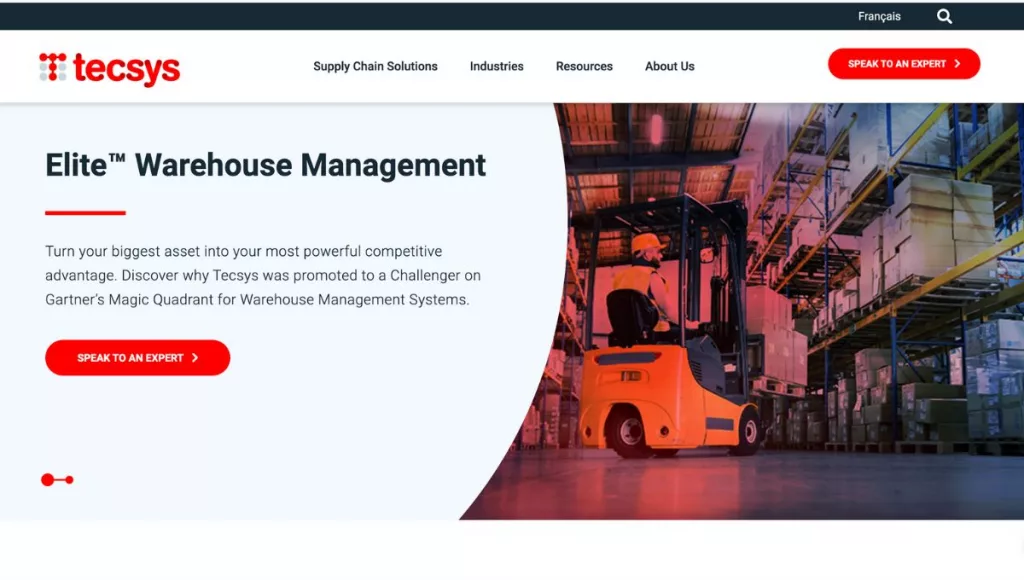
The Tecsys Elite Warehouse Management System (WMS) optimizes efficiency, accuracy, and fulfillment in warehouse operations. Here are the benefits, features, and limitations, kindly have a look:
Benefits of Tecsys Elite WMS:
- Optimizes warehouse efficiency and accuracy significantly.
- Achieves 100% order fulfillment with better technology.
- Adapts and scales operations.
- Provides complete operational visibility on one platform.
- Helps in quick onboarding for new staff.
Features of Tecsys Elite WMS:
- Provides Visual Logistics technology for clear instructions.
- Helps in flexible, modifiable workflows to eliminate errors.
- It has cloud-based technology that provides scalable solutions.
- It helps in easy task management and system updates.
Limitations of Tecsys Elite WMS:
- Have integration issues with existing systems.
- You need a full training to leverage all features effectively.
- Have potential scalability limits.
3. IBM Sterling WMS
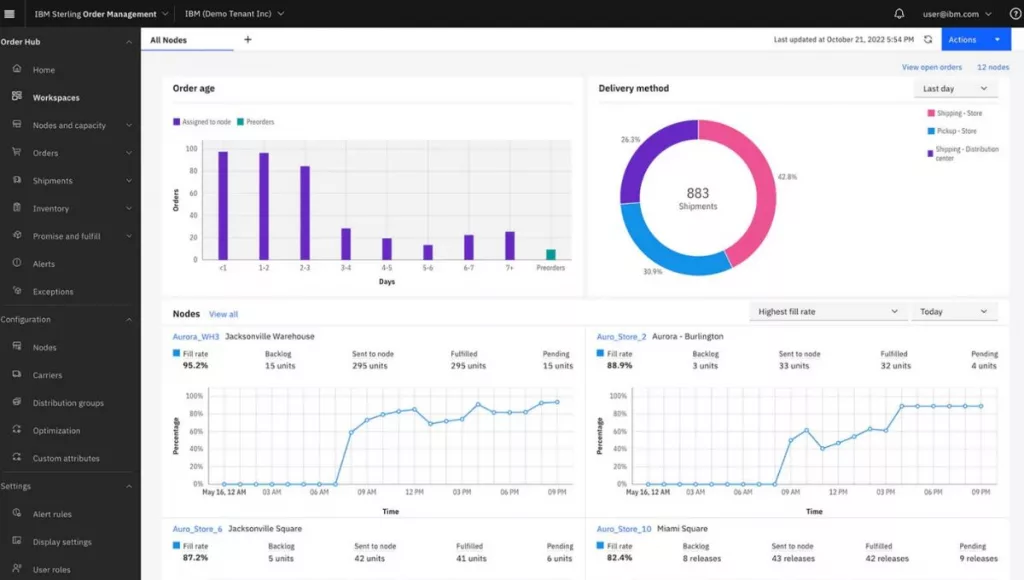
The IBM Sterling WMS is a robust solution providing real-time, accurate Warehouse data across sales channels, optimizing operations and customer experiences. It integrates smoothly with existing commerce systems, ideal for retailers seeking to enhance inventory management without overhauling their current setup.
Benefits:
- Centralized, real-time inventory visibility.
- Reduces inventory update latency.
- Lower investment in caching for e-commerce.
Features:
- Cross Docking
- Forecasting
- Real-Time Data
- Receiving & Putaway
- Reporting & Analytics
- Shipping Management
- Third Party Plugins
- Workforce/load Management
- Yard Management
4. Generix Group Solochain WMS
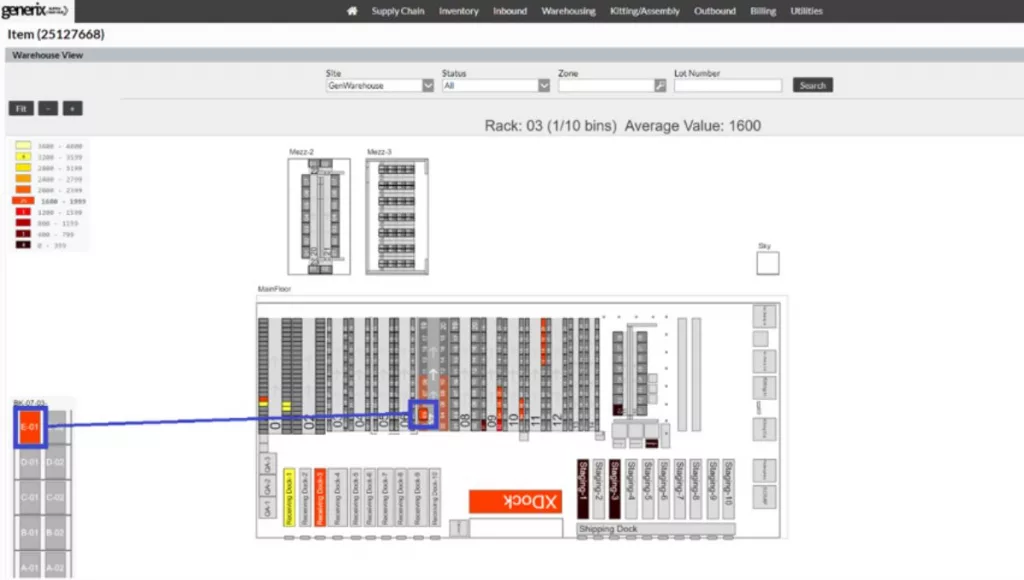
The Generix Group Solochain WMS focuses on enhancing the efficiency of all warehouse activities, tailored for various business sizes. Solochain solutions fit all your needs in supply chain management, datas and omnichannel sales. Here’s a concise summary:
Benefits:
- Offers over 150 standard processes for versatility.
- Ensures stress-free operation with 25 years of industry experience.
- Provides flexibility in implementation to adjust costs to business volume.
Features:
- Enhances receipts, returns, storage, preparation, packing, shipping.
- Integrates easily with applications and hardware.
- Includes yard management for synchronized warehouse operations.
Limitations:
- Adapting the system to unique business processes.
- Integrations are not built in this software.
- The upgrade process very time consuming and costly.
5. Microsoft Dynamics 365 Supply Chain Management System

The Warehouse Management module from Microsoft Dynamics 365 allows you to manage warehouse processes in manufacturing, distribution, and retail businesses. This module includes a variety of features to keep the warehouse facility operating at peak efficiency at all times. Warehouse management is fully integrated with other business processes, including transportation, manufacturing, quality control, purchase, transfer, sales, and returns.
Benefits:
- Enhances operational efficiency with integrated supply chain processes.
- Increases supply chain visibility and agility.
- Improves planning accuracy with AI-driven insights.
- Supports sustainability initiatives.
Features:
- Advanced analytics for smarter decision-making.
- AI and IoT capabilities for predictive insights.
- Comprehensive management for manufacturing, inventory, and warehousing.
- Seamless integration with other Microsoft products.
Limitations:
- Implementation complexity for large, diverse operations.
- It requires their training module for full feature utilization.
- Potential integration challenges with non-Microsoft products.
6. Microlistics Warehouse Management System

Microlistics WMS provides a scalable solution. It helps in optimizing warehouse operations in many industries. This system enhances efficiency and solves your complex warehousing issues. The main point here is that it integrates seamlessly with most existing systems. Let’s have a look at other details:
Benefits of Microlistics WMS:
- Microlistics WMS improves inventory accuracy.
- It enhances operational efficiency.
- Provides real-time visibility and tracking.
- It is flexible and scalable to business needs.
- Provides seamless integration with ERP systems.
Features of Microlistics WMS:
- Prior order fulfillment support is there.
- you can get automated replenishment.
- Have all in one reporting tools.
- Supports cross-docking and yard management.
Limitations:
- Initial setup is little complex.
- Requires training for optimization.
- May need customization for specific needs.
7. Oracle Fusion Cloud WMS
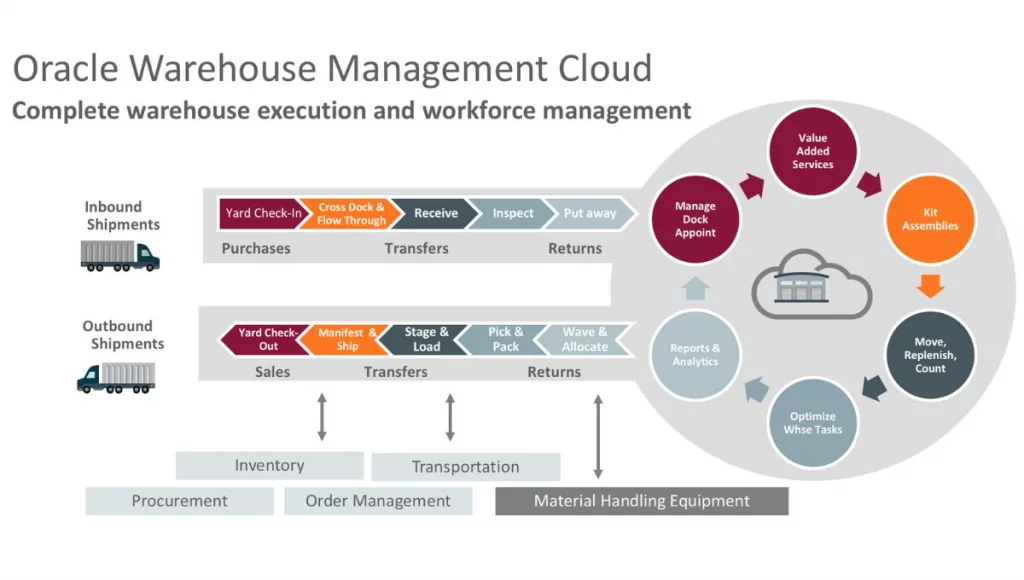
Oracle Fusion Cloud WMS offers a comprehensive cloud-based solution for managing warehouse operations. It provides analytics, automation, and real-time data to streamline processes. The system iprovides flexibility, improves accuracy, and reduces cost.
Benefits of Oracle Fusion Cloud WMS:
- This WMS provides global inventory visibility.
- Helps in cost reduction through efficient processes.
- Enhances supply chain agility.
- The system is scalable to any business size.
- provides you with strong analytics for better decision-making.
Features of Oracle Fusion Cloud WMS:
- Cloud-based deployment.
- Supports labor management.
- Has exceptional inventory management.
- You can get real-time analytics and reporting.
Limitations:
- May be costly for small operations.
- Complex integration with non-Oracle systems.
- Requires internet connectivity.
8. Körber (HighJump) WMS
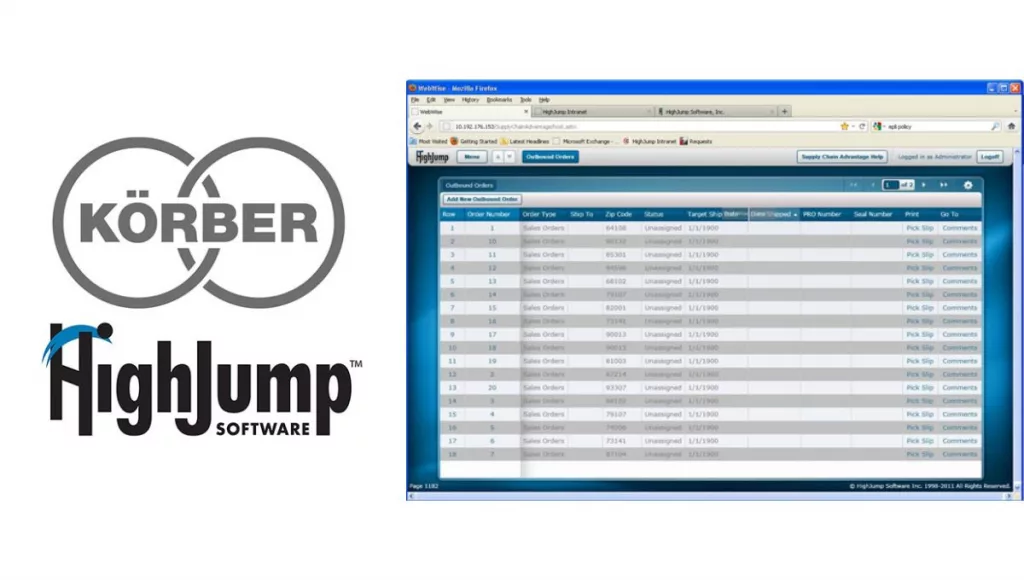
Körber’s WMS, formerly HighJump, offers flexible, integrated warehouse solutions. This system is designed to meet the dynamic needs of logistics providers. It focuses on automation, efficiency, and scalability. Also it enables businesses to adapt quickly to market changes.
Benefits of Körber (HighJump) WMS:
- Körber enhances operational flexibility.
- It improves inventory accuracy and visibility.
- Supports complex fulfillment strategies.
- Easily scales with business growth.
- Integrates with a wide range of systems.
Features of Körber (HighJump) WMS:
- It has awesome warehouse automation capability.
- Supports real-time inventory control.
- Provides multichannel order management.
- Labor management and optimization made easy.
- Have extensive integration capabilities.
Limitations:
- Can be complex to implement.
- Higher initial investment.
- May require extensive customization.
9. vTradEx eLOG WMS

vTradEx eLOG WMS is designed for complex logistics operations. It offers world class features to manage inventory, fulfillment, and shipping. It emphasizes connectivity and efficiency. Thus this WMS is suitable for both small and large-scale warehouses.
Benefits of vTradEx eLOG WMS:
- Increases operational efficiency.
- Provides real-time data for better control.
- The system is scalable to business requirements.
- Supports multi-warehouse operations.
- Streamlines the supply chain process.
Features of vTradEx eLOG WMS:
- Comprehensive inventory management.
- Helps in eifficient order processing.
- Supports warehouse task automation.
- Provides detailed reporting and analysis.
- Multi-warehouse support.
Limitations:
- Requires technical knowledge for setup.
- May need customization for specific workflows.
- Integration challenges with existing systems.
10. Infor CloudSuite Warehouse Management System
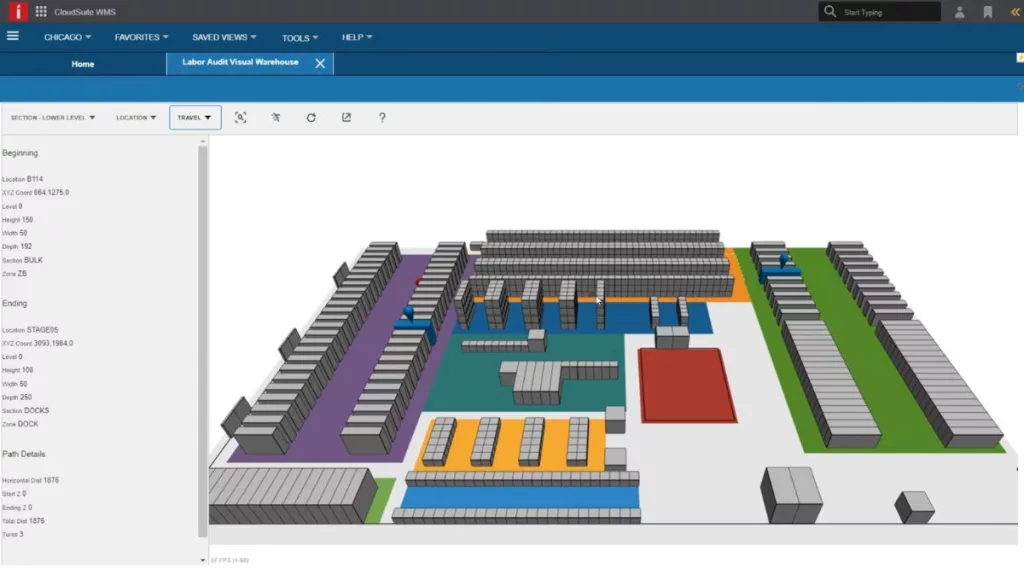
Infor CloudSuite WMS provides advanced, cloud-based warehouse management capabilities. It focuses on optimizing warehouse operations, enhancing visibility, and improving service levels through technology and innovation.
Benefits of Infor CloudSuite WMS:
- Improves warehouse efficiency and accuracy.
- The main benefit is that it Enhances visibility across operations.
- The solution is scalable to various business sizes.
- The platform is cloud-based for global access.
- Integrates with Infor’s ecosystem.
Features of Infor CloudSuite WMS:
- Real-time inventory management.
- Better labor management tools.
- Automates warehouse processes.
- Provides in-depth analytics and reporting.
- The best part is, it provides seamless integration with Infor products.
Limitations:
- Predominantly suited for larger enterprises.
- Requires initial and ongoing training.
- Integration with non-Infor systems can be complex.
Comparision Table of All 10 Examples of Warehouse Management Systems
| WMS Provider | Services | Features | Contact/Info |
|---|---|---|---|
| SAP ERP Warehouse Management System | Inventory and order management | Advanced analytics, RFID support, Integration capabilities | Contact SAP |
| Tecsys Elite Warehouse Management System | Full spectrum WMS | Warehouse operations, Analytics, Mobile capabilities | Contact Tecsys |
| IBM Sterling Warehouse Management System | Cross Docking, Forecasting | Real-time inventory tracking, Scalability, Cloud-based | Read IBM WMS Docs |
| Generix Group Solochain WMS | Scalable WMS solutions | Multi-site management, Real-time data, Automation support | Contact Solochain WMS |
| Microsoft Dynamics 365 Supply Chain Management | Comprehensive supply chain Analysis ($180 user/month) | AI-driven insights, IoT integration, Mixed reality data visualization | Read about MS Dynamics 365 |
| Microlistics Warehouse Management System | Modular WMS | Real-time control, Scalable, Comprehensive reporting | Know more about Microlistics WMS |
| Oracle Fusion Cloud WMS | Cloud-based WMS | Global inventory, Automation, Extensive integration | Contact Oracle |
| Körber (HighJump) WMS | Adaptable WMS solutions | 3PL functionalities, Scalable, Cloud or on-premises | Visit Site |
| vTradEx eLOG WMS | Logistics and supply chain | Supply chain optimization, Real-time tracking, Cloud-based | Contact vTradEx |
| Infor CloudSuite Warehouse Management System | Cloud-based WMS | Labor management, 3D warehouse visualization, In-built performance management | Read More about Infor |
How does a WMS Improve Logistics and Supply Chain Operations?
A Warehouse Management System (WMS) makes the processes of receiving, storing, picking, and shipping goods smoother by automating processes. This shortens the time it takes to do these tasks. Thus makes the warehouse more efficient.
Also, WMS helps warehouse workers use their space better. It saves money on extra storage space and improves efficiency.
With a WMS, supply chain managers can watch inventory levels in real-time. This leads to better control and management of inventory. It helps to avoid running out of stock or having too much stock. Thus makes the warehouse work more efficiently and saves on storage costs.
Top WMS solutions also offer tracking capabilities. It helps in quickly recalling products when needed.
Can small businesses benefit from implementing a WMS?
Small businesses can benefits a lot from using a Warehouse Management System (WMS). WMS can help these businesses lower expenses and boost efficiency. It’s a valuable tool for them to run warehouse activities smoothly and in a cost-effective manner.
By adopting a WMS, small businesses can cut down on labor costs. They can serve their customers better. It also helps them in optimizing their inventory and managing their stock.
Also, WMS can streamline the process of receiving, storing, and shipping products. So it makes processes faster and more accurate. This can lead to quicker delivery times, which customers love alot.
Small businesses can minimize overstocking or understocking. It ensures they have the right products available when needed. This improved inventory control precision saves money and strengthens the reliability of the business in the eyes of the customers.
What are the key factors to consider when choosing a WMS?
Here are the key factors that need to be considered while choosing a Warehouse management system. Please have a look:
- Confirm if the WMS enhances operational efficiency.
- Find a WMS that tracks activities from entry to dispatch.
- Look for simple interfaces that simplify learning curves for all users.
- Choose a WMS system that grows with your business and can integrate different ERP systems.
- It must offers clear and useful data for decision-making.
- Evaluate the lifetime value, taking into account all features against cost.
- Make sure the WMS seamlessly connects with your existing ERP infrastructure.
- Read user reviews to assess system reliability and customer service excellence.
Final Words
Hope we were able to provide you with best Warehouse Management System Examples. Based on the above criteria choose the best that suits your needs.
If you liked what you read then please consider sharing it with like minded individuals.
Recommended reading:
- Fleet Technology Revolution: Transforming Ecommerce Logistics in Real-Time
- Top Logistics Automation Companies
- Benefits of Implementing ERP Systems in the Logistics Industry
- 5 Business Processes to Automate to Speed up Your Workflow
- The Birth Of The New Manufacturing Industry 4.0 – Automation AI And Robotics
- The Role of IoT in Industrial Automation




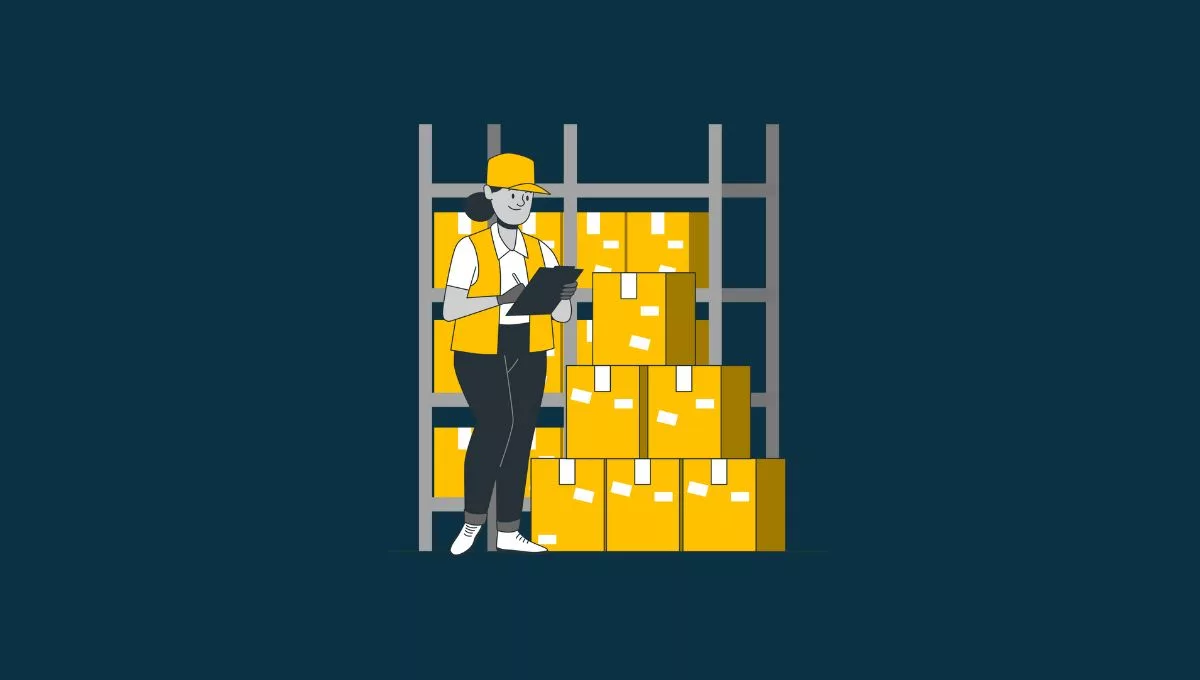





Leave a Reply